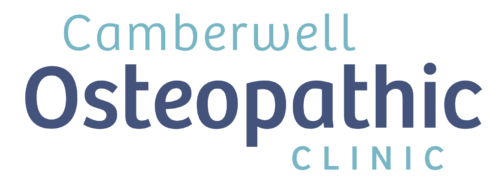After Breat Cancer
Navigating Recovery After Breast Cancer Surgery: How Osteopathy Can Help You Heal
Recovering from breast cancer surgery is a significant journey, often accompanied by challenges you might not have anticipated. Whether it’s managing fluid build-up, dealing with pain around scars, or experiencing tightness in your chest or arm, these post-surgery complications can make your recovery more difficult. The good news is that with the right care, including osteopathy, you can navigate these issues more effectively, making your healing process smoother and more comfortable. Osteopath Dr Imogen Collyer recently completed “After Breast Cancer” a course presented by Dr Amanda Hannaford—an osteopath who works exclusively with breast cancer patients—we’ll explore how osteopathy can be a valuable part of your recovery. Dr. Hannaford, with her extensive experience at the Kay Van Norton Centre for Wellbeing at The Mater Hospital in Sydney and the Northern Beaches Breast Clinic, has guided many patients through the complexities of post-surgical healing. With her insights, we’ll discuss how osteopathy can be a game-changer in your recovery journey.

Understanding the Road Ahead: Common Post-Surgical Issues
After your surgery, your body will be focused on healing, but you might encounter some common complications:
Post-Mastectomy Pain Syndrome (PMPS): Affecting up to 30% of women, PMPS can cause pain, tingling, or numbness around the chest, arm, or shoulder after surgery.
Seromas: These are pockets of fluid that can form under the skin, often appearing about a week after surgery.
Capsular Contracture: This occurs when scar tissue tightens around an implant, causing discomfort or changes in the shape of the breast.
Axillary Web Syndrome (AWS): Also known as “cording,” this condition involves tightness running from the armpit down the arm, which can restrict movement.
Understanding these potential issues is the first step in taking control of your recovery, and osteopathy can offer significant support.

How Osteopathy Can Support Your Recovery
Osteopathy is a gentle, hands-on therapy that focuses on the body’s structure and function. Here’s how it can help with each of the common post-surgical issues you might face:
Managing Seromas: Helping Your Body Absorb Fluid After surgery, you might experience fluid build-up (seromas), leading to swelling or tenderness. While many seromas are absorbed naturally, some may linger and require medical attention.
How osteopathy helps: Osteopathic treatment gently works on the tissues around the surgical area to enhance lymphatic flow and aid in fluid absorption. This approach can reduce discomfort and help prevent further complications, supporting a quicker and more comfortable recovery.
Post-Mastectomy Pain Syndrome (PMPS): Finding Relief from Nerve Pain PMPS can cause persistent pain or tingling in the chest or arm, often lasting for months. It’s a frustrating condition, but relief is possible.
How osteopathy helps: Osteopathy addresses nerve pain by focusing on soft tissue restrictions caused by scar tissue. Techniques like myofascial release help free up tissue around the nerves, reducing pain and restoring movement. Early osteopathic intervention can make a significant difference in preventing long-term discomfort.
Capsular Contracture: Softening Tight Scar Tissue If you’ve had breast reconstruction with implants, you might develop tight scar tissue around the implant, affecting the breast’s shape and comfort.
How osteopathy helps: Osteopathic techniques can soften and release tight tissue around the implant, improving comfort and helping the breast feel more natural. Regular osteopathic care can even prevent the need for additional surgeries, offering relief without extra procedures.
Axillary Web Syndrome (AWS): Loosening Tight “Cords” in the Arm AWS, or “cording,” involves tight bands of tissue extending from the armpit down the arm, which can limit movement and cause pain.
How osteopathy helps: Osteopathy focuses on gently breaking down these tight bands, restoring your arm’s mobility and easing everyday movements. Combined with physiotherapy stretches, osteopathic treatment can help you regain your full range of motion more quickly and comfortably.

What About Lymphedema?
While osteopathy is effective for many post-surgical issues, lymphedema—swelling from lymph fluid build-up—requires specialized treatment. Working with a lymphedema therapist, your care might include manual lymphatic drainage, compression garments, and exercises to reduce swelling. Osteopathy can complement these treatments by addressing tissue restrictions that might affect fluid movement, but it’s important to combine therapies for the best results.
Why Osteopathy is Key to Your Recovery
Osteopathy offers more than just relief from pain; it supports your body’s overall healing process. Early osteopathic intervention may help prevent long-term fascial restriction and other issues and help you heal more effectively. Whether you’re managing nerve pain, fluid build-up, or scar tissue, osteopathy provides a gentle, patient-centered approach to recovery. Incorporating osteopathy into your care plan can make a significant difference in how you feel during your recovery. With the right support, including osteopathic treatment, you can move forward with greater ease and confidence. Osteopathy is a valuable partner in your healing journey, helping you get back to the activities you love and feel like yourself again.

Imogen Collyer brings 10 years of experience as an Osteopath, dedicated to enhancing the well-being of her patients by helping them understand their bodies and find ease in movement and breathing. She has undergone extensive post graduate training in after breast cancer care, incorporating osteopathic techniques and principles into her practise. Imogen is available Tuesday and Thursday at our Camberwell location.
